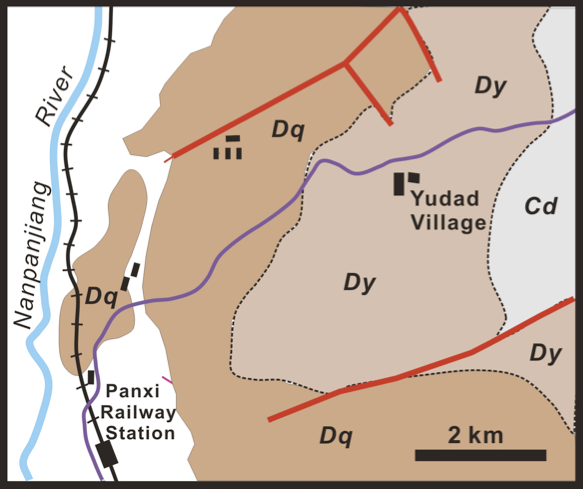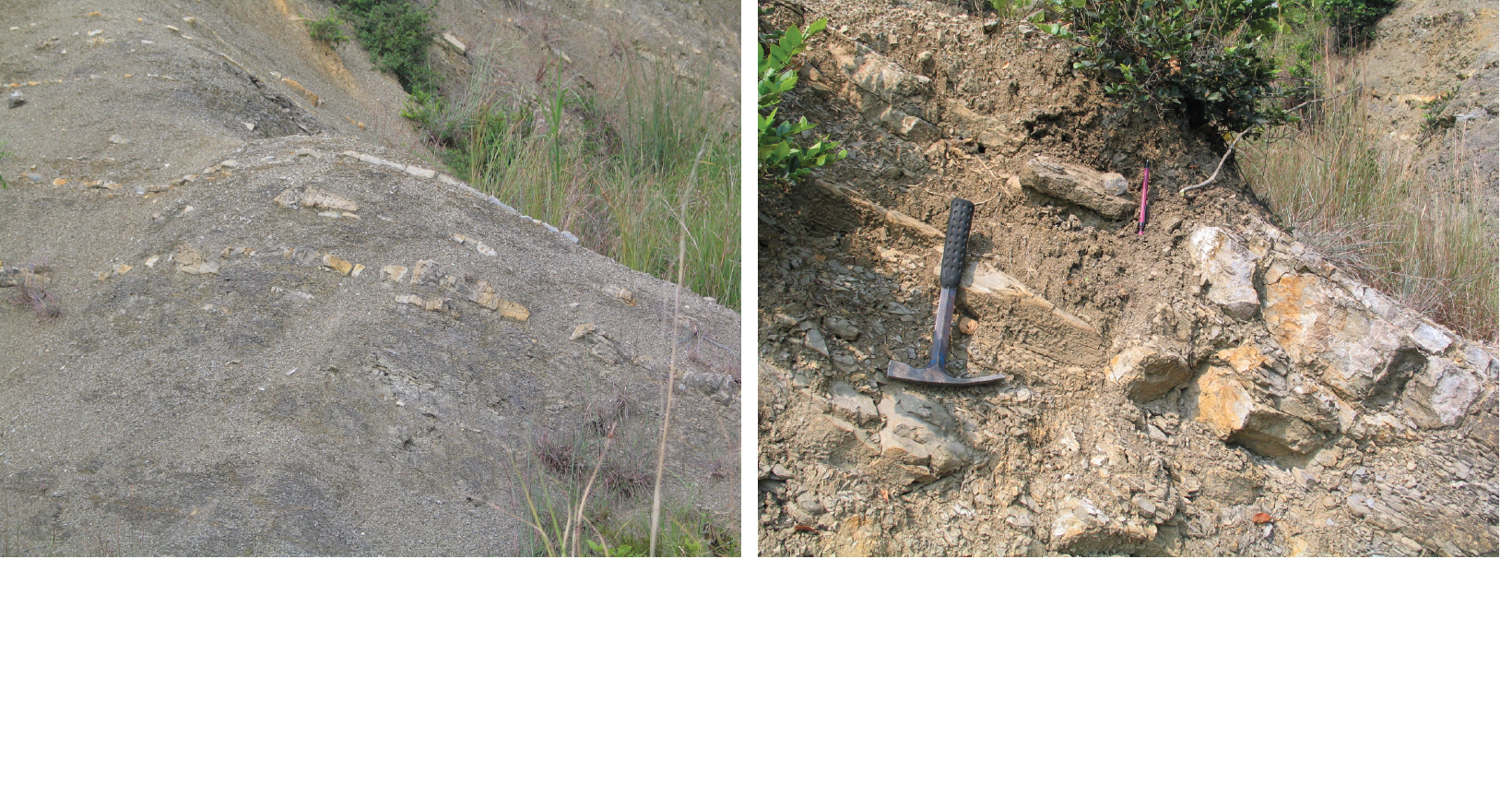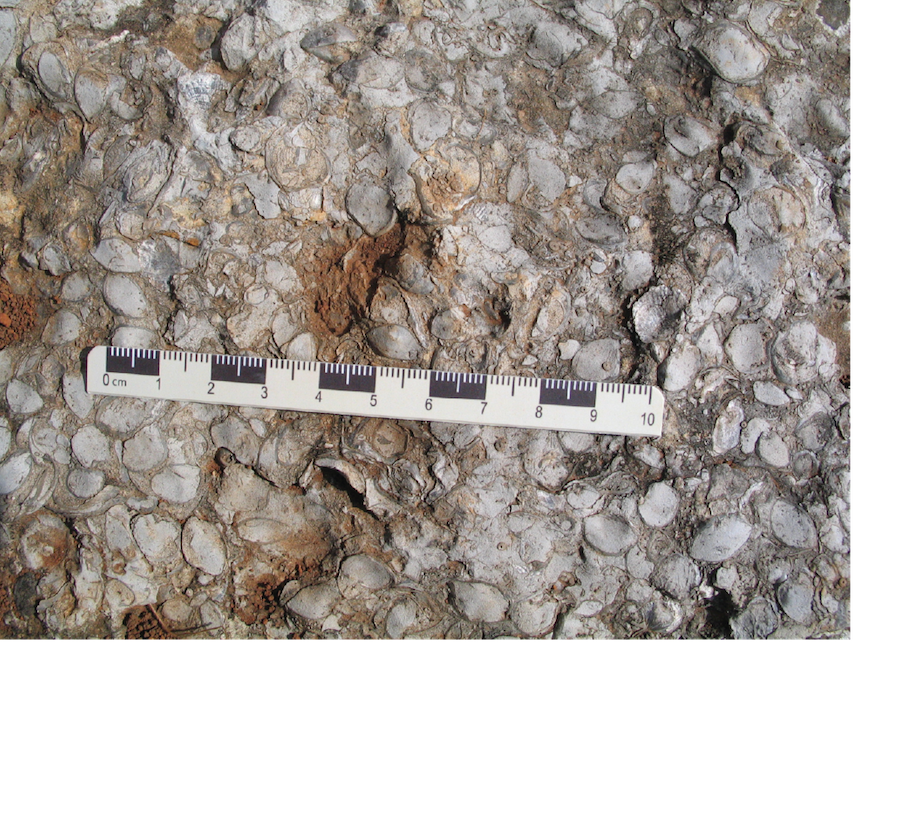Itate Fm
Type Locality and Naming
The type section is located near Yudade Village, 6 km northeast of Panxi Town, Yuxi Shi (103o 08’E-24o16’N), Yunnan. It was named by Sun Y. C. in 1945. Zhang Y.P. et al. (2018) made a detailed biostratigraphic study.
[Figure Location map of Itate Fm (Dy), Qujing Fm (Dq), and Datang Gr (Cd, Carboniferous).]
Lithology and Thickness
Claystone with limestone. The formation is subdivided into three parts. Lower part - composed of dark-gray calcareous and silty mudstone, shale intercalated with medium- to thin-bedded clayey limestone yielding rare fossils, 281.4 m thick. Middle part - consists of the alternation of thin to thick-bedded, clayey or muddy, banded limestone and thin-bedded nodular-like limestone containing abundant brachiopod and partially rich corals commonly with trace fossils, 190.8 m thick. Upper part - 98.9 m thick, is dominated by thin to thick-bedded detrital limestone intercalated with calcareous mudstone. Some beds of thick dolomite and of dolomitic limestone are seen in the base and top, respectively, with numerous corals and common brachiopods.
[Figure Outcrops of the lower part of Itate Fm at the type locality (left-overview; right-close up), length of hammer 24 cm.]
Relationships and Distribution
Lower contact
Conformabe on the underlying Qujing Fm
Upper contact
The upper contact is conformable and gradual with the overlying Zaijieshan Fm and is separated from it by the appearance of dolomite
Regional extent
The formation is restrictively distributed in Huaning-Panxi area.
GeoJSON
Fossils
It contains relatively abundant brachiopods, corals and conodonts. Lower part - important Brachiopods are Stringocephalus sp., Phlogoiderhynchus sp., Ypsilorhynchus subellipticus; Conodonts Polygnathus Dubius, P. linguformis klapperi, P. cristatus and Flora Barrandeina cf. dusliana, Lepidodendropsis sp. Middle part - Brachiopods Ladjia jiwozhaiensis, Warrenella sp., Phlogoiderhynchus sp., Ypsilorhynchus globosus, Corals Microphyllum intermedium, Sinophyllum hejiazhaiense, Truncicarinum temeniophylloides, Conodonts Polygnathus aequalis, Po. alatus, Po. Brevilamiformis, Ancyrodella rotundiloba pristina, A. r. rountundiloba, A. alata, Mestotaxis guanwushanensis. Upper part - Ammonoid Manticoceras wedekindi, Brachiopod Cyrtospirifer sp., Conodonts Mestotaxis guanwushanensis, M. asymmetrica, Palmatolepis transitans, Icriodus expansus, I. symmetricus etc..
[Figure Shelly bed of the lower part of Itate Fm.]
Age
Depositional setting
The lithology and fossils suggest an open platform to nearshore setting.
Additional Information


